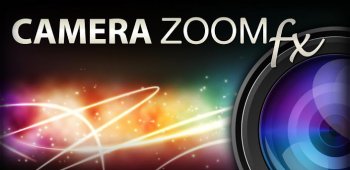
Design Love: Camera Zoom FX
The last year or two has seen a sea of change when it comes to the design of Android apps. Unless the developer has provided exceptional functionality, he can no longer expect success if the app doesn’t look good. In the Design Love series, I’ll share some of the best examples of the growth the platform has seen.
The first thing you notice when you launch Camera Zoom FX
Camera Zoom FX feels like a throwback in some regards, while still giving the user a lot of controls (which I’ll get to in the next section) without looking complex. Just have a look at the screenshot, and you’ll immediately know which options are hidden where.
OK, it looks good. But what functionality does it bring to my device?
I also use a couple of additional overlays, including one called the Horizon which helps you to ensure your images aren’t tilted. The other is a stability indicator which adds those red lines you see inside the centre circle when there’s too much movement.
It’s probably overkill, but I suck at taking photos. I’ve ruined far too many over the years, so I have started to practice when I’m free taking photos of objects lying around, working on my composition with and without the overlays. Hopefully I’ll get much better really soon.
Additionally, Camera Zoom comes with some great set of filters. Before I began using Pixlr Express, Camera Zoom was my go to app when I wanted to add some textures, vignette, frames and the lot. There are also some additional settings including collages, timers and one for voice-activated photography. You can also set it to take photos from your physical buttons, such as the volume buttons I’m using on my HTC One X.
Possible improvements?
If there’s one thing I miss about the stock camera app, it’s the viewpager system to quickly shift from the camera to the gallery, and deleting images via the stock gallery app. In fact, if there’s one thing that hasn’t been really thought out well at all in Camera Zoom FX, it’s the built-in gallery.
However, if all you are really looking for is a good app to replace the in-built camera on your device with a lot of additional features, particularly if you want to learn a few things about photography, Camera Zoom FX is a great option for you.
You can download Camera Zoom FX here. If you would like to suggest an app for Design Love, or give your thoughts on Camera Zoom, do let us know in the comments.